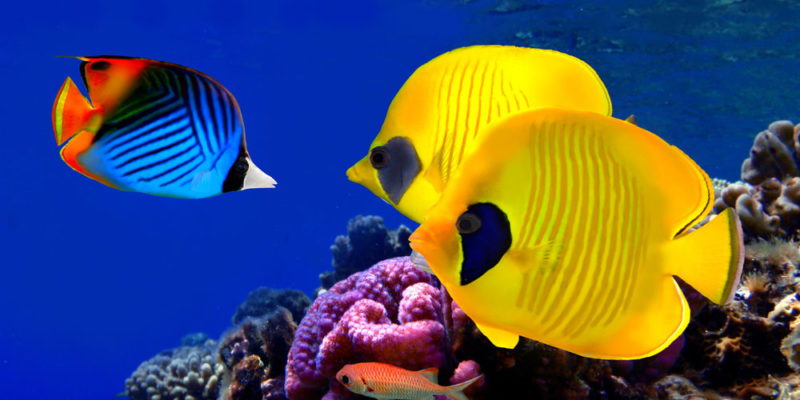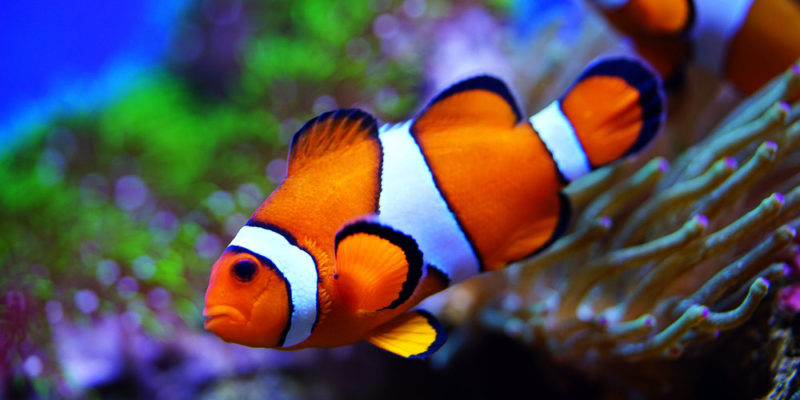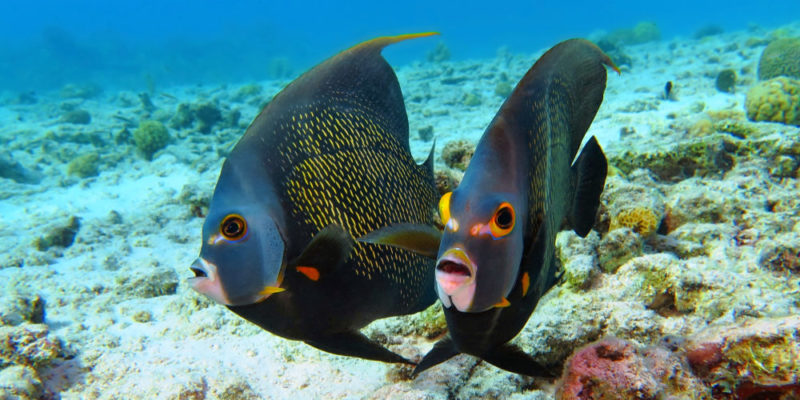We explain what fish are and what their main characteristics are. Also, their classification and how they are fed.
What are Fish?
Fish are the first vertebrate animals that emerged throughout animal evolution, an estimated 400 million years ago. Crucial in the appearance of the fish was the development of gills, to be able to breathe in the water, and the development of the swim bladder, to stay afloat.
Fish have always had a strong bond with man: they have been and are a very important source of human nutrition, and represent an interesting hobby for those who decide to raise fish as home pets and build and maintain their own aquariums.
Next, we explain the main facts and characteristics of the fish.
Top 10 Facts and Characteristics About Fish :
Feeding
 Within fish there are several ways of feeding:
Within fish there are several ways of feeding:
- Carnivores. They feed on other fish through a short digestive system and a fairly large stomach.
- Herbivores feed on algae and other vegetables, they have a less bulky stomach.
- Limnivores. They feed on waste and various materials present in the bottoms of watercourses.
- Omnivores. They consume all kinds of food (plant or animal origin).
Gill breathing
In order to breathe in the water, where air (and oxygen ) are dissolved, fish use special organs called gills. These are very thin and highly vascularized laminar structures, grouped in bony arches.In these gill lamellae, gas exchange occurs, which is countercurrent, since there it circulates in the opposite direction to the water, this optimizes the capillary diffusion of dissolved oxygen. Some fish also have external gills, which emerge on either side of the neck.
Classification
Broadly speaking, fish are divided into two major groups:
- Cartilaginous or chondrichthyans. They have a cartilaginous skeleton; the skin is covered with placoid scales and they lack a swim bladder. Sharks and rays derive from them.
- Bony or osteichthians. They have a bony skeleton and a swim bladder; however, in some groups, the swim bladder has evolved into a kind of lung.
Scales
 The body of the fish is covered by scales of horny material, these scales protect them from abrasive substances that may be present in the water and give the body a certain elasticity, which helps in swimming.
The body of the fish is covered by scales of horny material, these scales protect them from abrasive substances that may be present in the water and give the body a certain elasticity, which helps in swimming.
Hydrodynamic body
The fish have a shape that helps them move through the water, they are usually flattened or spindle-shaped and the fins assist in swimming.
Vejiga swimsuits
The swim bladder is like an air-filled membranous sac that many fish have, this is located on the digestive tract. This organ allows flotation without much effort; this is essential for bony fish, whose specific gravity is somewhat higher than that of water.
Heterothermia ("cold-blooded")
 This means that they cannot control their body temperature, which depends on external conditions. The same is true of amphibians and reptiles. For this reason, a distinction is usually made between cold-water fish and tropical fish: the former thrive well at temperatures of 15 to 20 ° C, the tropical ones from 24 to 28 ° C; For this reason, to raise tropical fish, which are often more colorful, it is necessary to add a heater to the tank.
This means that they cannot control their body temperature, which depends on external conditions. The same is true of amphibians and reptiles. For this reason, a distinction is usually made between cold-water fish and tropical fish: the former thrive well at temperatures of 15 to 20 ° C, the tropical ones from 24 to 28 ° C; For this reason, to raise tropical fish, which are often more colorful, it is necessary to add a heater to the tank.
Fins
As limbs, fish have flat structures known as fins, which are very important in their mobility. The dorsal fin and the caudal fin (that of the tail) are the most characteristic. The ventral is also noticeable and there may be others, usually smaller.
Absence of external genitalia
Fish do not have external sexual organs, but in viviparous or ovoviviparous groups, males develop a copulatory organ from the modification of their ventral fins.
External fertilization
 Most of the fish are oviparous and carry out their fertilization externally: the females spawn in some more or less protected place, and the males fertilize these eggs.
Most of the fish are oviparous and carry out their fertilization externally: the females spawn in some more or less protected place, and the males fertilize these eggs.Some fish are viviparous, which means that females give birth to their young as fully formed juveniles. There are also some families of ovoviviparous fish, in which the females retain the fertilized eggs inside them until they hatch. In these last two groups, fertilization is internal.
The above content published at Collaborative Research Group is for informational and educational purposes only and has been developed by referring to reliable sources and recommendations from experts. We do not have any contact with official entities nor do we intend to replace the information that they emit.
Cultural journalist with great interest in education and technological innovation in the classroom. The future passes through technology and it is already here. .
Leave a reply
Your email address will not be published. Required fields are marked *Recent post

Sport: What Is It, Types, Risks, Features, Characteristics and Examples

Dogs: Emergence, Features, Characteristics, Feeding and Breeds

Story: Definition, Elements, Structure, Features and Characteristics

